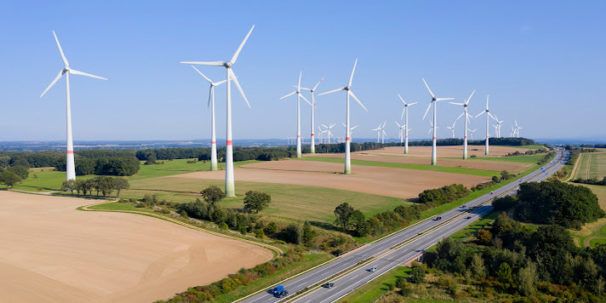50 of the biggest sustainability questions answered
Find out everything you’ve ever wanted to know about sustainability. We take a look at 50 sustainability FAQs, covering everything from sustainable living to sustainable development.

By Rhiannon Wardle
Sustainability has become a really important tool in the battle against climate change and other social, environmental and economic challenges. Given how crucial it is, we’ve decided to look at some sustainability FAQs and their answers.
The amount of information about sustainability online can be overwhelming, so here we’ll be breaking it down into simple points to help you start or continue your sustainability journey. From sustainable living to what the future of sustainability may hold, we’ll try to answer all of your burning questions.
General sustainability FAQs
What is sustainability?
The word sustainability comes from ‘to sustain’, which essentially means to provide support and prolong or preserve something. What we hope to preserve and support is life on planet earth. Thinking about this definition, we can view sustainability as an approach to life that causes the least possible harm to the natural world or living organisms.
Why is sustainability important?
The main goal of sustainability is to protect the planet so that future generations don’t have to suffer. Ultimately, we only have finite resources on this planet, but we’re currently not being considerate of that.
Our actions now shouldn’t be at the expense of our fellow creatures or humans, so it’s important to be aware of sustainability in our daily lives so we don’t cause more irreparable damage to Earth.
What are the 3 pillars of sustainability?
The three pillars of sustainability are the three most fundamental aspects of sustainability, and they are environment, economy and society. All of them, directly and indirectly, impact each other – none of these pillars stand alone.
This is why it’s important to consider everything when we’re talking about sustainability, from materials and wastage to human treatment and working conditions.
What are some examples of sustainability?
There are so many different ways to be sustainable. One example is green energy – wind power, for example, is a free, natural, and infinite resource that doesn’t cause harm to others, but does help to keep society functioning.
Another good example is creating, maintaining and looking after green spaces. This is because green spaces and plants improve air quality, protect water quality and reduce soil erosion, to name a few benefits.
How do you teach sustainability?
Sustainability should be taught to young children so that they embed healthy practices into their everyday lives without even thinking about it. For example, teaching them about composting, recycling, caring about animals and plants, and shopping second hand from a young age.
In later life, there are so many great resources, videos and sustainability courses that can teach people how to live more sustainably.
What are the benefits of sustainability?
The benefits of sustainability are countless, but to simplify this answer, we’ll break it down into thinking about the three pillars of sustainability. Sustainable practice benefits the environment by conserving and looking after Earth’s resources, preventing global warming and extreme weather, and protecting lives.
It benefits the economy by reducing wasted time, effort and power and finding a balance between growth and responsibility. It benefits society by building up communities and supporting those who are most vulnerable.
Is being sustainable difficult?
It’s not always easy trying to make sustainable choices in a society where overconsumption and endless consumerism is encouraged, not only by the world’s biggest corporations, but also by some governments.
However, more companies and governments are paying attention to sustainability than ever before, making it easier to make more informed and ethical choices. It may require a bit more research, but the benefits are endless.
Do you need to be rich to be sustainable?
You may have noticed that a lot of sustainable shops, whether they’re selling clothes, food or skincare, are pretty expensive. This makes it appear quite costly to be sustainable, but it needn’t be the case.
A lot of sustainable practices actually originated from a desire to save money; for example, using less energy, not buying unnecessary products and not wasting food. In addition, indigenous people are some of the most sustainable of all, despite having little money or material possessions.
Where can I learn more about sustainability?
Whether you’re a new learner or someone looking to make your business more sustainable, FutureLearn offers flexible online sustainability courses that allow you to study the subject so that you can improve your understanding and potentially make important life changes.
From sustainable construction and development, to how we can create sustainable energy systems, now is the time to explore this fascinating topic.
What sustainability certifications or frameworks exist?
This depends greatly on the area you’re interested in learning more about. You can find out about sustainable fashion certifications, sustainable food certifications, and more online. Certifications and frameworks help you to find companies that you trust, and you can then recommend to others who want to start their sustainability journey.
Living sustainably FAQs
How can you be more sustainable?
There are plenty of things that you can do to be more sustainable. What you’re able to do will depend on things like where you live and how much time you have, but there are still options for everyone.
In addition, you don’t have to be perfect in order to be sustainable. It’s better to make a few changes and stick to them rather than not try at all because you’re unable to do everything sustainably.
What are some examples of sustainable living?
As we’ve previously mentioned, sustainable living will look different for everyone. For some people, it might look like being completely self-sufficient – growing your own food, creating your own energy and building your own structures.
However, for others, sustainable living is merely being more aware of your choices, including how much you consume, where you buy from, and how you treat the Earth and other living creatures.
How can I be more sustainable at home?
There are so many simple ways you can be more sustainable at home. To start with, you can make sure you turn off any electric appliances or lights when you’re not using them, reduce your water intake (take shorter showers), and recycle when you can. We’ll go into more specifics in the questions and answers that follow.
How can I eat more sustainably?
In our blog Is eating meat bad for the environment? we investigate exactly how damaging the meat industry is. The main takeaway is that reducing your meat consumption can be a great way to have a more sustainable diet.
Other than that, you should think about where you get your food from, as small markets and butchers might be better than big supermarkets. In addition, try to buy items with as little single-use plastic packaging as possible.
How can I reduce my food waste?
There are so many ways you can reduce your food waste. The first thing is to keep track of the food you have in your fridge and cupboards. You can do this by making sure you keep older items near the front and making meal plans that use up all of your food items.
Then, you can compost any vegetable peels and odd bits, or use a food sharing app like Olio to share any food that is about to go off and you know you won’t eat.
What is sustainable fashion?
Sustainable fashion can come in different forms. It’s mostly sustainable to buy second-hand clothes from thrift stores, charity shops, and apps like Depop, so long as you don’t then try to sell them for much more money afterwards.
It’s also sustainable to look after the clothes you already own by caring for them properly and sewing or tailoring them when they break. Brand-wise, sustainable fashion is made with eco-friendly materials, designed and manufactured ethically, and ensures that everyone involved is paid fairly.
What’s the most sustainable way to travel?
A huge amount of carbon emissions come from transportation, with a large majority of those emissions coming from road vehicles. Flying is also not great for the environment.
The most sustainable way to travel is either by foot or bike, but this is obviously not possible in many scenarios. Public transport like buses and trains are a good option, and if you do need a car for work, consider buying an electric or even hydrogen-powered car.
What is sustainable technology?
Sustainable technologies tend to use renewable energy, are made from materials that don’t have a negative environmental impact, and are usually energy-efficient. Examples include electric vehicles, LED lights, carbon storage technologies and solar panels.
How can I bank sustainably?
You may not have considered banking on your sustainability journey before, but switching banks is actually one of the most impactful decisions you can make. This is because big banks are not only the cause of many financial crises, but they’re also the biggest funders of fossil fuels.
Some examples of ethical banking alternatives include Triodos and Nationwide. App alternatives like Monzo and Starling are also better than the traditional banking giants.
How can I reduce my energy usage?
Switching to renewable energy is something really helpful that you can do, and companies like Big Clean Switch help you to make these changes without the hassle. If you’re happy with your provider, you can try to keep tabs on how much energy you use by installing a smart meter, or trying our Sustainable Energy Access for Communities course.
Sustainable development FAQs
What are the sustainable development goals?
The Sustainable Development Goals (or SDGs) were created as an attempt to map out a series of goals that would tackle the world’s most important challenges, with a deadline set for 2030. They include goals related to ending poverty, providing access to education, protecting and preserving life, fixing inequalities and tackling climate change.
Who created the SDGs?
The Sustainable Development Goals were created in Rio de Janeiro in 2012 at the United Nations Conference on Sustainable Development. They served as a replacement for the Millennium Development Goals (MDGs) that were created in 2000 as part of a global effort to fight poverty and hunger.
How will the progress of the SDGs be monitored?
There is an SDG Tracker website where data is presented across all indicators in the Our World in Data database. These statistics are taken from the UN and other official international organisations, and form a free, open-access publication that monitors global progress towards the SDGs.
This enables the public to see how their country is doing, so they are able to hold their government accountable if it fails to make changes.
What happens if we don’t reach the SDGs?
There is a high chance that many of the SDGs won’t be reached by 2030. While this won’t all be related to COVID-19, the pandemic has certainly increased global inequity and made it harder to track data relating to the SDGs.
However, the goals are still important to have in place because they remind us what our hopes and aims for humanity are, and help us strive for something better.
How can design thinking help with sustainable development?
Design thinking might be a key tool whilst thinking about sustainable development. In our Designing for a Sustainable Future course by Samsung, you can learn more about how design thinking can be used by technology companies to solve problems and find innovative solutions to the world’s problems.
What is the difference between ESG and sustainability?
ESG is an acronym for environment, social, and governance, so we can see that the concept will have some overlap with sustainability. The main difference between the two is that ESG is specific and measurable, whereas sustainability is a broader and more vague term.
This means that companies can use ESG criteria to make tangible decisions and steps in their company to become greener, more ethical, and better governed.
What is sustainable construction?
Sustainability in construction is a hugely important part of development, as it can help to build a more eco-friendly world for future generations. Sustainable construction requires you to build with renewable and recyclable materials, with consideration about the amount of energy and resources being used and the environment surrounding the construction site.
Looking to learn more about sustainable construction? Build expert skills and earn construction certificates with our range of online courses from top universities.
What counts as a green building?
The World Green Building Council defines a green building as ‘a building that, in its design, construction or operation, reduces or eliminates negative impacts, and can create positive impacts, on our climate and natural environment’. Features that can make a building green include the use of renewable energy, non-toxic materials and waste-reduction measures.
What does it mean to have a sustainable economy?
The economy is probably not something you normally associate with sustainability, but it’s actually very important. Having a sustainable economy is about not favouring economic growth at the cost of social, environmental and cultural factors, and finding a good balance between growth and responsibility.
This isn’t just for the benefit of the planet, but can also benefit big corporations by reducing wasted effort, time and money.
What is meant by the green economy?
A green economy takes this one step further. It’s defined as low carbon, resource-efficient and socially inclusive by the UN Environment Programme, where public and private investments go into assets and infrastructure that work to reduce emissions, pollution and biodiversity loss, and to enhance energy and resource efficiency.
-

 London College of Fashion Fashion and Sustainability: Understanding Luxury Fashion in a Changing WorldCreative Arts & Media,Business & Management
London College of Fashion Fashion and Sustainability: Understanding Luxury Fashion in a Changing WorldCreative Arts & Media,Business & Management
Careers in sustainability FAQ
What are some careers in sustainability?
If you’re interested in sustainability, there are a bunch of careers you might be interested in, depending on your particular passion. You might want to work in renewable energy, wildlife conservation, animal welfare or green technology – but you can also work in an ordinary company and try to make sure they push for sustainable practices.
Are sustainability jobs in demand?
Sustainability is a fast-growing industry, so more and more jobs are becoming available. Interest from young people and students in sustainability is particularly driving the rise of sustainability careers. Some of the most in-demand jobs include clean transport manufacturers, urban growers and recycling plant operatives.
What are the benefits of working in sustainability?
Working in sustainability can be very rewarding because you know you’re having a positive impact on the world. In addition, sustainable companies should pay and treat their workers well in order to reflect their values, and if they don’t, it will be easier to hold them responsible. Finally, as sustainable initiatives are on the rise, you will have decent job security in this field.
How can you champion sustainability at work?
The best thing you can do is to talk to your colleagues and leadership team about sustainable practices. You don’t need to preach to them, but by discussing options, pointing out the benefits of sustainability, and being sustainable yourself, you’re likely to have a positive impact.
Why is corporate sustainability important?
Corporate sustainability is so important because it helps organisations strive for more sustainable practices and think about something other than profit. This is especially essential because just 100 companies are responsible for over 70% of emissions, so more responsibility needs to be taken by corporations than is currently happening.
How can I be more sustainable at work?
There are several things you can try to be more sustainable at work. Creating a green team that focuses on sustainable initiatives can be a good idea, or you could try to go paperless at work, ride your bike on your commute, or try to cut down on single-use plastics.
What does a sustainability officer do?
A sustainability officer (or CSO) has the role of analysing and predicting the stability and environmental impact of the company. They’re in charge of setting policies, goals, and objectives that will help the company meet environmental policies as well as make a profit.
What does a sustainability consultant do?
A sustainability consultant has the job of working with different companies and businesses in order to help them become more responsible and conscious of sustainable and ethical practices. They evaluate the impact that the company is currently having by looking at things like their carbon footprint, and then they come up with tangible solutions.
How can I run a sustainable business?
Luckily for you, we have some great courses that’ll help you get started with running a sustainable business. Try our Social Enterprise: Growing a Sustainable Business course or our Upcycling: From Green Ideas to Starting a Business course, both by Minca Ventures.
Can I study sustainability at university?
Yes, you can. They all vary a bit depending on which aspect of sustainability you want to eventually work in, but sustainability degrees are becoming increasingly common. From studying climate change to sustainable development or even sustainable fashion, there are plenty of options out there. One of our courses will make an excellent starting point.
Sustainable future FAQs
What is climate change?
Put simply, climate change is the long-term shift in weather patterns and global temperatures, often seen on a large scale. It’s a natural part of life, and existed for centuries before humanity was born, but when we talk about climate change today, we’re normally referring to the fast rise of temperatures that we’ve seen in the last 100 years as a result of human activity.
What are the biggest causes of climate change?
There are several main causes of climate change. The biggest one is the burning of fossil fuels, as this is the primary cause of global warming as a result of more greenhouse gases going into the atmosphere. The other big causes of climate change are deforestation, as this releases C02 and halts the release of oxygen, and many practices in the agricultural industry.
What is the impact of climate change?
The impact of climate change is extremely far-reaching, affecting our environment, fellow living creatures and society. Some of the biggest repercussions of climate change include extreme weather events like flooding and droughts that lead to forest fires; mass extinctions of animal and plant species; melting ice glaciers that lead to rising sea levels; and changing wildlife habitats that can negatively affect many ecosystems.
What are fossil fuels?
The three main fossil fuels are coal, crude oil and natural gas. They’re named fossil fuels because they were formed from the fossils of plants and animals that lived millions of years ago, and their origins are the reason why they have a high carbon content. Fossil fuels are extracted using a range of methods, including mining, drilling, fracking and acidizing, all of which are extremely harmful.
What is renewable energy?
Renewable energy comes from energy sources that replenish themselves, and is, therefore, often naturally sustainable. For example, wind and sunlight are powered by nature itself, and so we can always rely on them for energy as long as the weather permits it. Renewable energy has been around for centuries in the form of waterwheels and windmills, but it was first used commercially in 1927.
What is my carbon footprint?
A carbon footprint can belong to an individual or company, and is essentially a measure of the total amount of greenhouse gasses released into the atmosphere as a result of your actions. It’s usually measured in tonnes of CO2e. Reducing your carbon footprint is one tangible way you can try to make a difference and become more sustainable.
What does greenwashing mean?
You might have heard this term being thrown around lately, since greenwashing is becoming more popular in today’s society. Greenwashing is when a company tries to market themselves as environmentally friendly or sustainable without actually working to reduce their environmental impact or become more ethical. Essentially, it’s a deceitful advertising tactic used to appeal to those who want to shop sustainably.
How can we design for a sustainable future?
It will take a lot of work and commitment to ensure that we design for a sustainable future, and this requires us to educate ourselves. Luckily, we have plenty of courses created with that in mind.
Try our Systems Thinking for Sustainability: Complex Systems Analysis ExpertTrack for a deep dive into complex systems analysis and sustainable design, or start off with our Tackling Environmental Challenges for a Sustainable Future course if you’re new to this.
Can sustainable technology help save the world?
The role of technology is certainly a huge one when we contemplate saving the world from environmental, economic and social collapse. Technologies such as renewable energy and electric vehicles are undoubtedly game-changing, so we hope that even more solutions will arise in the near future.
However, we can’t just rely on technology – human behaviour and simple actions will make all the difference.
What can we do as individuals to create a more sustainable future?
There are so many things we can do – in our section on living sustainably, we discussed that changing your food, fashion, transportation, banking and energy habits can make a real difference. In addition to this, you can push for legislation by going to peaceful protests, writing to your MP and local councillors, and advocating for sustainability on social media.
-

 University of York Bioeconomy: How Renewable Resources Can Help the Future of Our PlanetNature & Environment,Science, Engineering & Maths
University of York Bioeconomy: How Renewable Resources Can Help the Future of Our PlanetNature & Environment,Science, Engineering & Maths




